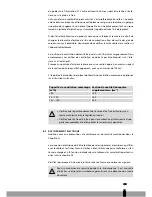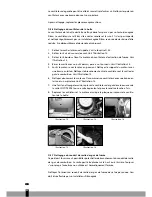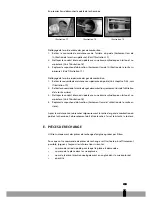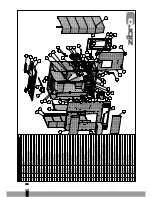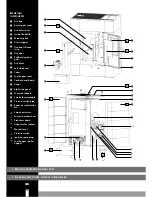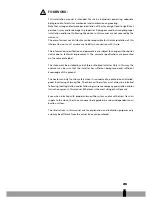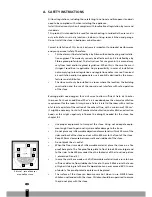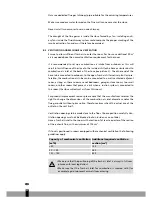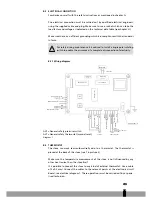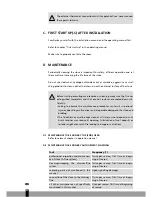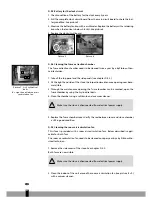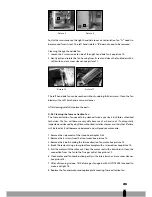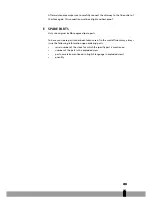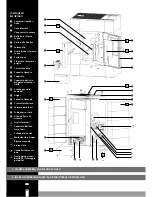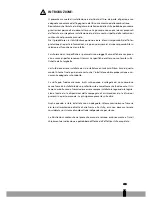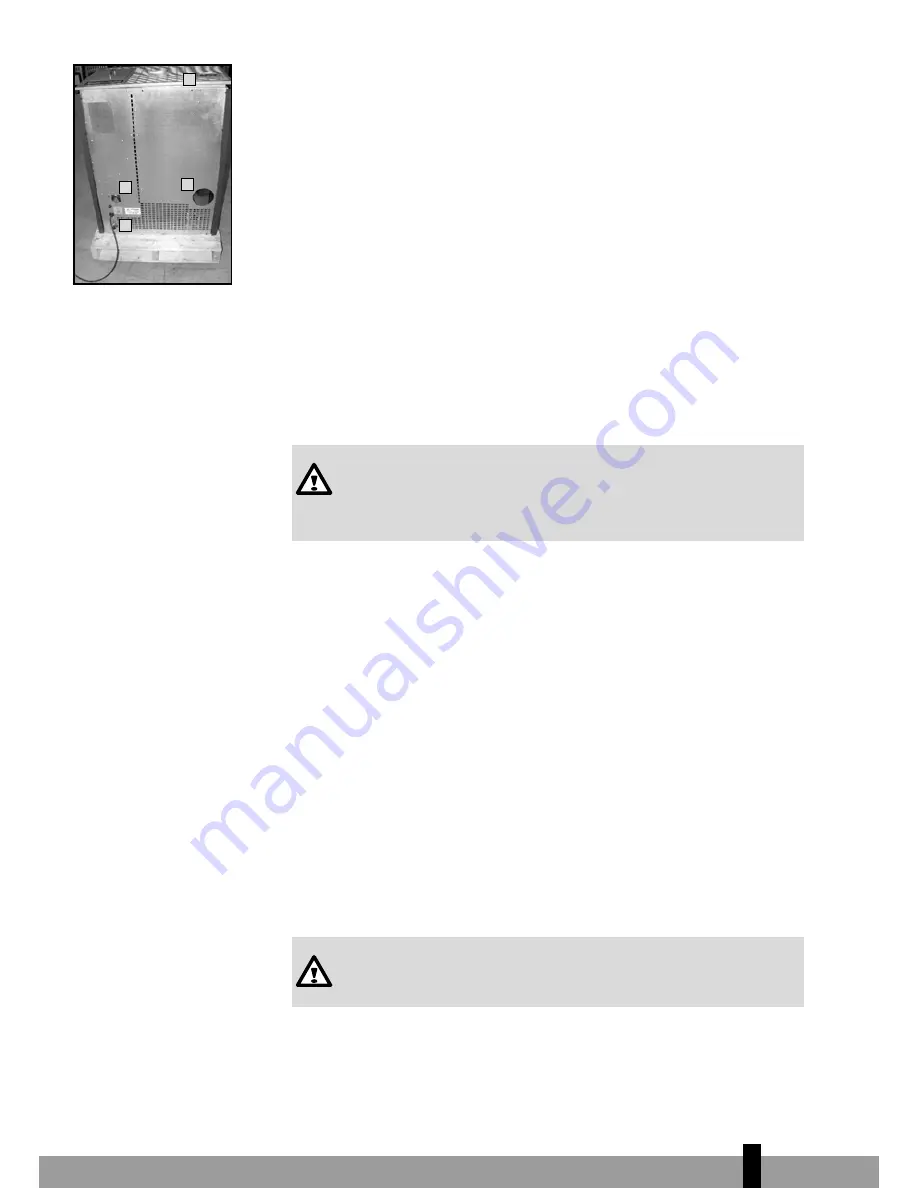
57
4
of the stove.
•
Ensure to allow sufficient fresh air to enter the room. Per hour an additio-
nal, minimum 50 m
3
air is needed above the normal ventilation requirement
for the room. See chapter B.2. Local/regional legislation and/or regulation
might state different fresh air demands and/or might demand certain fresh
air inlet openings to the room. Whatever is the most stringent will prevail.
Install the stove horizontally by changing the height of the adjustable feet. Use a
spirit level. Make sure the stove is stable at all times- all adjustable feet must make
good contact with the floor.
This stove is provided with 2 potential flue gas outlet pipe connection possibilities.
Either the outlet can be placed on top, or the outlet can be placed at the back side. See
picture 2. Always make sure that the opening which is not used is closed securely.
b.1 The Flue/chImneY
The heater can only function safely and efficiently when it is connected to a profes-
sional installed, good functioning chimney/flue.
The chimney/flue system must always be installed following local legislation
(law/directives/standards) and/or following insurance company prescription
and/or instructions given in this manual. Whatever is the most stringent will
prevail.
The stove may not be used to support the flue/chimney.
The flue/chimney must be kept clean at all times as soot deposits or not burnt resi-
dues may reduce its opening. Culmination of soot deposits or residues might even
catch fire leading to dangerous situations. Have the chimney cleaned and swept
following the local legislation and/or your insurance company prescription. If no
local legislation and/or insurance company prescription: make sure that at least
twice per year at the beginning of the heating season your entire stove system
-including chimney- is checked and maintained by an authorized specialist. When
intensively using the heater the chimney must be cleaned more frequently.
The stove needs a chimney/flue draught of 12 Pa. (plus or minus 2 Pa.). This draught
to be measured when the stove and chimney are warm.
When the draught is more than 12 Pa. the efficiency is lowered and the resulting
higher temperatures will shorten the lifetime of the stove.
When the draught is less than 12 Pa. the proper combustion is hindered, and exces-
sive carbon deposits and smoke will be produced.
Not enough draught might lead to dangerous situations as the flue gasses
might enter the room. Always make sure there is sufficient draught.
Make sure the flue pipe connection to the combustion gasses outlet of the stove is
air tight. Seal the joint carefully.
Use the correct connection pipe diameter 80 mm. Make sure there are no narro-
wings.
Picture 2, A= top flue gas
outlet position
B= back side flue gas outlet
position
C= combustion air inlet. The
butterfly valve is delivered
loose.
T = Thermostat
T
c
b
a
Summary of Contents for TOSCA
Page 17: ...17 2...
Page 34: ...34 6...
Page 50: ...50 3...
Page 66: ...66 4...
Page 83: ...83...
Page 85: ...85...
Page 101: ...101 1...
Page 103: ...103 1...
Page 118: ...118...

